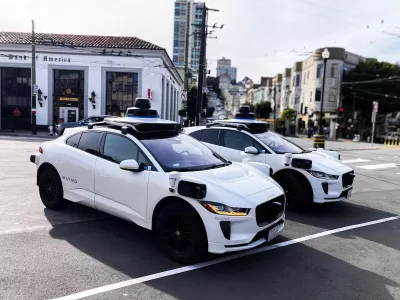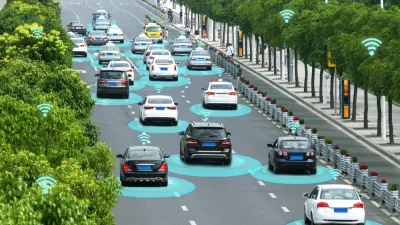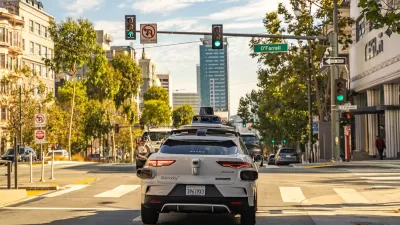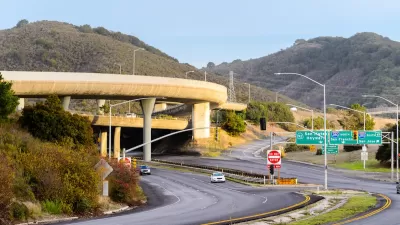Robotaxis can lead to longer, more frequent trips and are projected to increase VMT by as much as 83 percent.

The rise of autonomous cars could have numerous downstream effects, writes Jeral Poskey in an opinion piece in Smart Cities Dive.
Poskey points out several ways that robotaxis could be counterproductive to climate goals. First, robotaxis could induce more travel due to their visible upsides like convenience and the reduced financial burden. In the same vein, autonomous cars could encourage longer commutes, making people less averse to long commutes since they don’t have to drive themselves. Robotaxis also create more empty trips as cars circle around passenger-less, waiting for fares.
All told, with more frequent trips, longer commutes and more empty trips, a University of California-Berkeley study calculated robotaxis could increase total VMT by a whopping 83%, nearly double today’s levels.
An MIT study warned that these factors could lead to more sprawl as people find it easier to live farther from their jobs. “s destinations grow farther apart, more infrastructure, such as roads and parking, is needed. This, in turn, pushes destinations even farther apart, creating a spiral of sprawl that becomes self-perpetuating.”
Poskey advises that planners should think about how to build “better cities, not better cars.” Whether or not cars have human drivers, urban design and planning can guide development that is more sustainable and less car-dependent.
FULL STORY: The unseen environmental costs of autonomous cars

Manufactured Crisis: Losing the Nation’s Largest Source of Unsubsidized Affordable Housing
Manufactured housing communities have long been an affordable housing option for millions of people living in the U.S., but that affordability is disappearing rapidly. How did we get here?

Americans May Be Stuck — But Why?
Americans are moving a lot less than they once did, and that is a problem. While Yoni Applebaum, in his highly-publicized article Stuck, gets the reasons badly wrong, it's still important to ask: why are we moving so much less than before?

Using Old Oil and Gas Wells for Green Energy Storage
Penn State researchers have found that repurposing abandoned oil and gas wells for geothermal-assisted compressed-air energy storage can boost efficiency, reduce environmental risks, and support clean energy and job transitions.

Minneapolis Bans Rent-Setting Software
Four cities have enacted restrictions on algorithmic software that can inflate rent costs.

Oakland to Add 244 New EV Chargers
Oakland plans to launch its new charging network at eight locations by the end of 2025.

Jane Goodall Inspires with Message of Hope, Resilience, and Environmental Action
Speaking in Pasadena, Jane Goodall offered a hopeful and inspirational message, urging global compassion, environmental responsibility, and the power of individual action to shape a better future.
Urban Design for Planners 1: Software Tools
This six-course series explores essential urban design concepts using open source software and equips planners with the tools they need to participate fully in the urban design process.
Planning for Universal Design
Learn the tools for implementing Universal Design in planning regulations.
Heyer Gruel & Associates PA
City of Moreno Valley
Institute for Housing and Urban Development Studies (IHS)
City of Grandview
Harvard GSD Executive Education
NYU Wagner Graduate School of Public Service
City of Cambridge, Maryland
Newport County Development Council: Connect Greater Newport





























